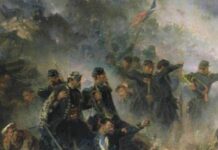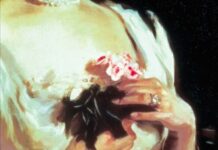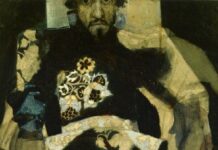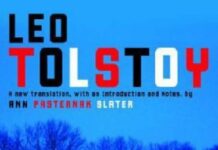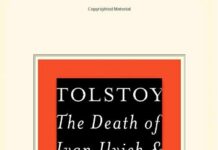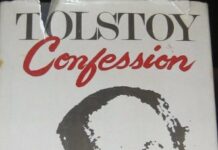
Ebook Info
- Published: 2009
- Number of pages: 1403 pages
- Format: EPUB
- File Size: 1.60 MB
- Authors: Leo Tolstoy
Description
A book that you don’t just read, you live’ Simon Schama Tolstoy’s magnificent epic novel of love, conflict, fate and human life in all its imperfection and grandeurWar and Peace begins at a glittering society party in St Petersburg in 1805, where conversations are dominated by the prospect of war. Terror swiftly engulfs the country as Napoleon’s army marches on Russia, and the lives of three young people are changed forever. The stories of quixotic Pierre, cynical Andrey and impetuous Natasha interweave with a huge cast, from aristocrats and peasants to soldiers and Napoleon himself.Translated with an Introduction and Notes by Anthony Briggs with an Afterword by Orlando Figes
User’s Reviews
Reviews from Amazon users which were colected at the time this book was published on the website:
⭐As a mother who screens everything her 13-year-old daughter reads, I was hesitant at first to introduce her to one of my all-time favourite books, partly because if its length, and partly because *other people* say it’s too difficult for anyone not in a college Literature class. I am SO GLAD I decided to ignore common wisdom! This book, and all its various dramatizations have made Leo Tolstoy our permanent favourite writer. The only thing missing from our “War and Peace” experience is visiting Russia in person. I’d settle for seeing a Fabergè exhibition if there was one in town 🙂 Nevertheless, I foresee a revival in all things Leo Tolstoy in the days to come: “War and Peace” is quoted in both “The Gallagher Girls” YA series as well as the (unexpectedly affecting) existential novel “The Elegance of the Hedgehog” (which actually quotes Anna Karenina more). “The Elegance of the Hedgehog” is also a movie available in DVD form now, I believe. I am convinced our enjoyment of these other books (and life in general) would be much enhanced with a (re)reading of one of the world’s first l-o-n-g series. If a person can get through all seven of Harry Potter’s adventures, (s)he can certainly manage “War and Peace.” I’m only sorry *I* didn’t read Tolstoy myself until I was 30!!! Said daughter’s review follows. Her quotes are taken from a mix of the Kindle version of the book, and the Penguin Classics edition.” ‘War and Peace’ by Leo Tolstoy is one of the longest books in the world, a story spanning the course of about twenty years and which is about, well, *life*. And, like life, the book is complicated when trying to explain it, yet it makes perfect sense to anyone who reads it. There are betrayals, death, marriage, love, religion, war, passion, historical facts, courageous and cowardly men – actually, I think the only genres it *doesn’t* cover would be cowboy and alien. As a thirteen-year-old girl, who has always loved books, I’m not usually a fan of giant books – I prefer to be able to curl up with a book, not plonk it on my desk as if it’s some tree-made brick. However, I think I will make an exception to this particular giant-of-a-book.”In case you don’t know the plot of the story, here’s the shortest version I can possibly give you.”Basically, the book revolves around five people – Prince Andrey, Princess Maria, Nikolai Rostov, Natasha Rostov, and Pierre Bezukhov, and their lives from 1805-1820.”Prince Andrey is unhappily married, and is a bit of a jerk to everyone except Pierre, who’s basically his BFF (Best Friend Forever), and, occasionally, his younger sister, Maria.”Princess Maria is Andrey’s little sister, and she is extremely religious and kind. However, her and Andrei’s eccentric father often bullies her, and she is always being told that she is plain, so she is rather insecure.”Nikolai is Natasha’s older brother. He is “in love” with Natasha’s best friend, Sonya. He, like most boys, dreams of being a war hero. Unlike most boys *now* though, he actually has a chance to be one.”Natasha is about 12 years old at the start of the book, and is very naïve and lively. However, she is prone to bouts of depression and seriousness, which are sometimes good (like when she tries to understand the secrets of life), and sometimes bad ( when she thinks that no one will ever truly love or understand her).”Pierre is the illegitimate son of the wealthy Count Bezukhov, which makes him very unpopular among the aristocratic families. Unfortunately, he is also extremely clumsy and absent-minded, and spends most of his time drinking and partying. He’s kinda like that boy in high school, you know, the one who’s best friends with the school bad boy, but is never noticed without someone thinking ‘ugh!'”As the book goes on, many things happen. Russia goes to war against Napoleon’s armies, and Nikolai and Andrey both decide to go and fight. Meanwhile, Maria is very unhappy, but tries to cheer up for Andrei’s pregnant wife’s sake. Natasha is growing up, and becoming more and more beautiful every day, and Pierre suddenly inherits all of his father’s fortune, making him suddenly popular with, well, everyone. However, then he gets a crisis of faith, and does all these things to try and find out if there is a God.”My favorite part was the ending. I’ve always like epilogues, and with this, I’m no different. This is one of my favorite quotes from one of the endings. Tolstoy decided to have *two* endings – one so that readers can find out what happened to all the characters, and another to explain life and history. This quote (which is on page 1292 in my version of the book) is from the ending where we find out what happens to the characters:” ‘After seven years of marriage Pierre had the joyous and firm consciousness that he was not a bad man, and he felt this because he saw himself reflected in his wife. He felt the good and bad within himself inextricably mingled and overlapping. But only what was really good in him was reflected in his wife, all that was not quite good was rejected. And this was not the result of logical reasoning but was a direct and mysterious reflection.'”However, you’re going to have to read the book yourself to find out what happens to the rest of the characters!”My favorite characters (because I can’t choose just one), would have to be Natasha and Pierre. I like Natasha because she’s a bit like me – we both are a bit … umm… *lively*, and we both sometimes get gloomy/serious. Unlike Natasha though, I’m not a good singer or dancer! 🙂 I like Pierre, though, because, right now I’m kinda looking for the meaning of life like he did. While Pierre joined the Freemasons though, I became Buddhist for about a month, before deciding that, as much as I liked Buddhism, Christianity was more my style. Also, Pierre really does *try* to be kind. Sometimes he goes about it the wrong way, but sometimes he ends up becoming the person’s favorite confidant! As the book says, (on page 1231 in my Kindle),” ‘In external ways Pierre had hardly changed at all. In appearance he was just what he used to be. As before he was absent-minded and seemed occupied not with what was before his eyes but with something special of his own. The difference between his former and present self was that formerly when he did not grasp what lay before him or was said to him, he had puckered his forehead painfully as if vainly seeking to distinguish something at a distance. At present he still forgot what was said to him and still did not see what was before his eyes, but he now looked with a scarcely perceptible and seemingly ironic smile at what was before him and listened to what was said, though evidently seeing and hearing something quite different. Formerly he had appeared to be a kindhearted but unhappy man, and so people had been inclined to avoid him. Now a smile at the joy of life always played round his lips and sympathy for others, shone in his eyes with a questioning look as to whether they were as contented as he was, and people felt pleased by his presence. Previously he had talked a great deal, grew more excited when he talked, and seldom listened; now he was seldom carried away in conversation and knew how to listen so that people readily told him their most intimate secrets.'”However, there were things I didn’t like about *either* of them. I guess that means though, that Tolstoy did his job – the book is suppose to show what life is *really* like. And, yeah, sometimes fighting a war for a good cause won’t save you, sometimes your friends will annoy you to death, and sometimes the meanest person you know is the hero in someone else’s life. But that’s life – complicated and messy and chaotic and sad, funny and crazy and mysterious – but you know what?”That’s why I like it so much.”
⭐To be clear this review is of the Penguin Classics; Deluxe edition (November 28, 2006).The physical book is very nice. Thick glued spine and heavy tough cover. The pages are nice and the font is not too small. Sometimes thick paperbacks just don’t hold up, but this one is built like a tank. Good job!I enjoyed this translation as well. no tedious French to slog through. I wish all the translators would do it this way. It is enough to know when the characters were speaking French, I don’t want to have to do my own translation every time they do.
⭐The edition is very nice and the translation makes it readable. It’s a great book to carry around and does the novel justice. The novel itself can be tough going in places and can be a rather depressing read, but overall it’s worth completing. I recommend buying Give War and Peace A Chance as a companion guide to help when you’re reading the novel. I don’t think War and Peace is the greatest novel ever written. It will stay with you for weeks/months afterwards, but in my opinion Don Quixote is the greatest novel ever written. Nothing really comes close!
⭐The way a book feels in my hands is really important to me when it come to enjoying a book. This is a pleasant book to read. The paper quality is good. The print is readable and it opens nicely.
⭐Heavy read. Need patience, if lend time it’s needed to sink in. You will soon find nobody have ever capture the life in it’s infinitesimal parts that it feels like a period and era depicted in novel displayed in-front of you to its every breathe.
⭐Good translation and unabridged. Very nice cover.
⭐This review of the Briggs translation of “War and Peace” is broken down into two segments, a Descriptive Summary and an Evaluative Summary. If you’re already very familiar with the story, you may wish to skip directly to the latter facet of my review which is essentially the critique of this particular volume/translation.DESCRIPTIVE SUMMARY:In 1805, Napoleon Bonaparte invaded Austria to expand his European empire. Russia, being an ally of Austria, stood with their brethren against the infamous Emperor. Napoleon prevailed and a treaty was ultimately signed at Tilsit. In 1812, Napoleon invaded Russia, again in an effort to expand his empire. The end result of this tragic war was that Napoleon’s army of about 600,000 soldiers was reduced to roughly 60,000 men as the defamed Emperor raced from Moscow (which he had taken), back across the frozen Russian tundra in his carriage (leaving his troops behind to fend for themselves) for Paris. That encapsulizes the military aspect of this work.But the more intricate story involves both the activities and the peccadillos of, primarily, three Russian families of nobility: The Rostovs, the Bolkonskys, and the Bezukovs. The continual thorn of “The Antichrist,” Napoleon, really just provides the wallpaper for this story of romance, riches, desolation, love, jealousy, hatred, retribution, joy, naiivety, stupidity and so much more. Tolstoy has woven an incredibly intricate web that interconnects these noble families, the wars, and the common Russian people to a degree that would seem incomprehensible to achieve — but Tolstoy perseveres with superb clarity and great insight to the human psyche. His characters are timeless and the reader who has any social experience whatever will immediately connect with them all.In his Epilogue, Tolstoy yields us a shrewd dissertation on the behavior of large organizations, much of it by way of analogy. It’s actually an oblique, often sarcastic, commentary on the lunacy of government activities and the madness of their wars.”War and Peace” is a fictional, lengthy novel, based upon historical fact.EVALUATIVE SUMMARY:Anthony Briggs, the translator of this edition, is a former Professor of Russian at the University of Birmingham, (Edgbaston, 26,000 students), coupled with the fact that he has previously translated many other literary works from their original Russian language. Overall, his 2005 translation is a fluid, easy-to-read version of “War and Peace”.Having previously read the stalwart Maude translation (twice) and the new (2007) Pevear-Volokhonsky translation I feel compelled to state that that I’m very pleased and impressed with Briggs’ smooth, modern-language translation, (which is also devoid of any anachronistic or modern “buzzwords”), and, I’m even more copasetic with the book’s straightforward layout. The main text of the Viking Adult version is nicely supplemented with 4 detailed maps, a list of principals (both fictional and non-fictional), and 2 commentaries, all at the rear of the text. There is NO introduction by the translator and it’s a direct read — rendered entirely in English with almost no footnotes to bother with. There are historically-oriented endnotes but, as they are at the finale of the work, I found them useful, yet not distracting. The book is almost exactly the same size and weight as the P-V translation, (3.8 pounds, pretty hefty), with a beautiful white sewn binding and with a white dust jacket. (Penguin offers two alternative bindings of the Briggs translation as well).One of the few early complaints I heard on Briggs is that he “British-ized” the dialogue, using words like “mate” as soldiers address one another… so it’s not written in “American” English. This fact, too, probably doomed him a bit in pecuniary terms, at least in the USA. But that is a very small caveat and I was not in the least distracted by this actuality. As Briggs pointed out in his commentary, (paraphrasing), he had to choose an English dialect to translate it TO and, since he himself was English, that was the vernacular which he chose to utilize. This makes total sense to me and the actual instances of these “British-izations” of the language are actually few and far between.Some others have criticized Briggs for eliminating the French entries (Briggs renders the entire work, unabridged, in English), thus eliminating the need for footnotes that we see in other translations which yield the English translation of the French script. Briggs does, however, shrewdly let us know, (by working it into the text), when a particular dialogue or letter was originally written by Tolstoy in French where this fact is either relevant or important for the reader to know. Honestly, the “straight English” text is much of the beauty of this volume for the casual reader because it’s notably less distracting. Those who wish to read “War and Peace” for some academic or scholarly purpose would be better served by reading either the Maude or P-V translations since both maintain the French entries, with English translations in the footnotes, the French being roughly two percent of the entire book.In summary, if you are looking for a complete and unabridged, easy-to-read version of “War and Peace” which features modern language, the Briggs translation would be a fine choice.
⭐There is no point in reviewing the novel. In my view it is the greatest of all and I’m now on my third reading in fifty years. The first, in two Penguin volumes was translated by Rosemary Edmonds. The second, in six volumes in the fabulous LEC edition, used the Louise and Aylmer Maude translation. I found both excellent. For my third reading I tried, somewhat hesitantly, the Pevear / Volokhonsky edition but I’m afraid I found it as wooden and lifeless as the ones they did of Crime and Punishment and Anna Karenina and gave up halfway and moved to the Briggs Penguin. Some may aver because of its heavy use of contemporary English but I find this brings real freshness to the novel. These observations are personal and I’m sure others would disagree about Pevear and Volokhonsky – they have after all won awards so someone enjoys their work – but they are not for me. To give an example, their version of one of the lines uttered by Denisov, who has a speech impediment, is “The devil pghrompted me to go to that ghrat”. Now I’m sure this isn’t too hard to figure out but how did they make up that attempt to convey an inability to pronounce “r”s, whose constant repition becomes very irritating? Briggs, on the other hand, writes “Devil knows why I had to take on that wotten wat”, both better English and without the mangled attempt at conveying the impediment.
⭐Set against the backdrop of the Napoleonic Wars and Napoleon’s invasion of Russia, War and Peace follows the lives and fates of a small number of aristocratic families; The Rostovs – their enchanting daughter Natasha and patriotic sons Nikolay and Petya; The Bolkonskys – cynical Prince Andrey and religious Princess – Marya and Pierre Bezukhov, considered one of the greatest characters ever written. Several themes are woven throughout the book as the characters find themselves and each other. And all the time Napoleon is marching ever closer to Moscow.This is my second time reading War and Peace and I enjoyed it just as much the first time I read it. It is a weighty tome coming in at just over 1350 pages, but it is so absorbing that I didn’t notice the pages going by.The translation is interesting because it is the first time I have really noticed a translation in a book. When I’m reading a classic book such as a Charles Dickens for example, I know it is a novel from the 19th Century because of the language and phrases that are less commonly seen now. But this translation, apart from the time it is set in, read like a more modern novel. The language flowed easily and I had very little back and forth between the text and the footnotes at the back. If I’m honest I did question if this was a good thing. But ultimately, it did not lessen my enjoyment of the book.The writing is incredibly dense. And by that I mean after reading for an hour, I found I’d only covered about 40 pages. But again, this meant I was able to savour the story even more. It is a book that demands your time but the investment is worth it.I loved the characters. Natasha was by far my favourite and I enjoyed how she would fill a room with light. She was also a character that really ‘grew up’ in the book. Pierre is a complex but ultimately very kind character, full of good intentions and integrity. He is certainly the most cerebral character. I hate to use the journey word, used ubiquitously in talent shows, but he is the character who sees most, gets involved most and ultimately questions everything he does or believes.The themes running through the book are powerfully written and I think this is what makes the book slightly unusual and unique. The structure sees Tolstoy introducing us to a theme with careful and written thoughts surrounding it. And then it it left to the characters to demonstrate this and become the embodiment of the theme. Birth and Death are discussed and beautifully written with the final days of one of the main characters – hanging on and then letting go. It’s very moving.The epilogue was the only disappointment in the novel. We had read a breathtaking, epic novel, following characters who I had invested in. We said our farewells at the end of Part IV and then there was the epilogue. The epilogue reads as a historical essay about the Napoleonic Wars and its causes. For me this felt slightly overblown and I was not surprised to read that Tolstoy did not necessarily want War and Peace to be classified as a fiction book. he would have preferred the genre ‘a philosophical novel’ about history. Speaking as an ex-Bookseller, thank heavens they kept it as fiction or classics as it is now filed under. I don’t think the philosophical fiction section would have been very large.I do feel that War and Peace deserves its place in the Top 20 of the Big Read List. Sweeping, considered writing about a fascinating group of people. It’s well worth the effort.
⭐A great novel without a doubt. Ordered this clothbound edition from Amazon just over a year ago and have only just got round to reading it. It looks great, similar to books from the ‘folio society’ but minus the slip-case. This edition is easily readable, with an excellent translation. However about 300 pages into the book some of the pages have started to come adrift. I am currently up to page 500 and around a dozen pages have become detached. Very disappointing for a relatively expensive edition. I bought this edition to replace a pretty tatty paperback (which I no longer have). I was intending purchasing more volumes of these penguin clothbound books as they look great, however given the poor quality of this one I will be giving them a wide berth. I shall stick to buying the more expensive but vastly superior quality folio editions in future. I only wish I had started reading this book shortly after buying it as I am no longer able to return it to Amazon.
⭐My journey through war and peace has just been something else.War and Peace is a beautiful, dazzling piece of literature. At its heart describing the human condition with a clarity and richness I have never experienced reading before.Tolstoy conveys emotion with so few words. At times I felt not enough words, as when he just kills off a character so quickly, and although I wanted more at these times, he was giving us reality.He has the ability to see inside you and creates a narrative with so many emotions and sensations, that you feel you are experiencing it yourself.It is a complex and untidy book, but I actually loved this. There isn’t really a start middle and end – the book just sort of stops and that is weird but it makes you feel that the characters all just continue living within history as it continues. He weaves history and the characters experiences together in an astonishing way, there is a real richness to it that I won’t forget.He shows us how messy history is, it’s not boxed up neatly for us as in a textbook. It is ongoing, with blurred lines, and no control so that you cannot identify the ‘right side’.This book is for everyone, don’t be put off. It is readable, funny, rich, complex and simply a literary triumph.I will definitely read this again through my life as I feel it has so much more to give me and I will take new meanings from it each time I read.
⭐The prompt for the headline says “What’s important to know?” but there’s not enough room in the headline to give my full answer to that question, which now follows. What’s important to know about Tolstoy himself, and about this book of his, has already been said by academics, critics, journalists and readers over the past 150 years or so since Tolstoy wrote it, most of them much more qualified than me as writers, and as analysts and critics of literature.However, having had some experience of translation work, I feel qualified enough in that area to evaluate the work of Anthony Briggs, the translator of the specific version of War and Peace that I bought:- in my opinion, Briggs is to translating as Tolstoy is to writing literature – a giant, a colossus, in fact.
Keywords
Free Download War And Peace (Penguin Classics) in EPUB format
War And Peace (Penguin Classics) EPUB Free Download
Download War And Peace (Penguin Classics) 2009 EPUB Free
War And Peace (Penguin Classics) 2009 EPUB Free Download
Download War And Peace (Penguin Classics) EPUB
Free Download Ebook War And Peace (Penguin Classics)
